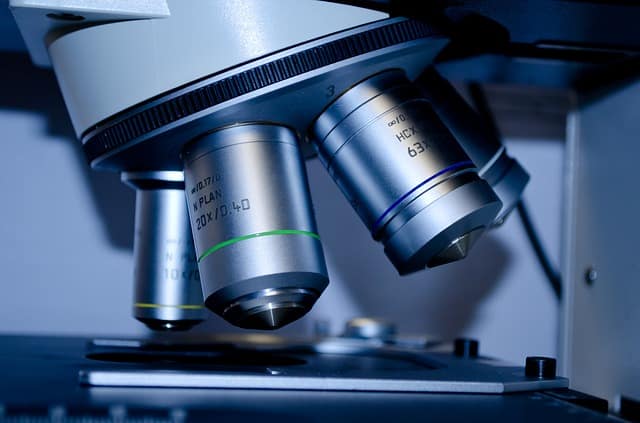Almost every month, messages about clinical trials with so-called iPS cells have appeared within one year. These are stem cells that are obtained from ordinary body cells. Their field of application is broad: at the beginning of November 2018, a man with Parkinson’s disease was injected with nerve precursor cells from such cells into the brain. Shortly thereafter, a heart failure patient was bedded with very thin platelets of cardiomyocytes developed from iPS cells on the diseased heart area.
In addition, a few weeks ago, the first results of a therapy conducted in 2017 on five patients with a retinal disease (macular degeneration) were announced. They had implanted retinal cells grown from iPS cells into the eye. One of the people treated had a slight improvement in vision and, after all, stabilized the other four, according to scientists from Kobe University.
And the next study is in the starting blocks: Patients with a fresh spinal cord injury should be injected into the injured area this year from iPS cells bred nerve precursor cells.
The inventor of iPS cells is Japanese
All these messages come from Japan, from the universities of Kyoto, Osaka, Kobe and Tokyo. That’s no coincidence. Both the Japanese state and private companies are investing heavily in iPS research. For it was a Japanese, Shinya Yamanaka, who had succeeded in the production of such cells for the first time in 2006: By adding four genes, he achieved what experts had previously considered impossible: to restore specialized body cells to a quasiembryonic state. This earned him the Nobel Prize in 2012, triggering a veritable iPS research boom worldwide.
The iPS cells appeared to be the ideal material for replacement tissue: they saw the chance to grow and implant the body’s own replacement cells and thus be able to avoid any repulsion reactions. In addition, human embryos did not have to be destroyed, as with the use of embryonic stem cells. There have even been a few therapeutic trials on humans. Then it was quiet for a while about the potential savior.
The nucleus of Japan’s renewed iPS boom is Yamanaka, which has established a large and well-equipped iPS lab at Kyoto University. His team has been involved in all these studies. According to one of the participating researchers, Japan not only spends a lot of money on iPS research, but the legislation for the use of stem cells is also very liberal there. For example, there are thousands of non-clinical trials of so-called adult stem cells in Japan. Although these cells have a lower potential for development than embryonic stem cells, they are also found in adult bodies.
Success in Australia
But something is happening outside of Japan as well. Thus, the largest clinical study to date on iPS cells by the Australian biotech company Cynata Therapeutics carried out. However, there was also a Japanese donor here, Fujifilm. Last year, fifteen patients suffering from severe graft-versus-host disease (GVHD) were injected with mesenchymal stem cells grown from iPS cells. In GVHD, transplanted cells, for example from a bone marrow donor, attack the patient’s tissue. According to Cynata, the injected stem cells have been able to prevent the formation of attacking cells in the foreign bone marrow to a certain extent. This reduced the severity of GVHD in fourteen patients and even disappeared completely in eight of them.
The US company Fate Therapeutics also started an experiment with iPS cells in April of this year: It uses them in a pilot experiment to combat cancer. A patient was injected with immune cells specialized in the destruction of tumors. These had previously been grown from iPS cells.
It remains to be seen, however, whether these small clinical trials really bring the breakthrough for medical applications of iPS cells. It can take months or even years to get meaningful medical results. All previous experiments with iPS cells and their offshoots were – as far as known – not continued.
But no body cell therapy
The promise of the body’s own therapy, the iPS cells have so far not fulfilled. The patients did not receive any cells that had been grown from their own tissue. Rather, they were given cells from foreign donors, which were stored in iPS banks.
The hope for an endogenous stem cell therapy has been shattered for two reasons, according to experts. On the one hand, it has been shown that during the cell culture phase, the iPS cells develop genetic changes that make them seem foreign to their own immune system. Thus, they can trigger rejection reactions. Therefore, either all cells must be sorted out with such mutations or – as in the now begun therapies with foreign iPS offspring – the immune system suppressive drugs are administered. In fact, in one patient in the Japanese macular degeneration study, the implant had to be removed because of a rejection reaction.
On the other hand, it has turned out that the cultivation of tailor-made cells is tedious and expensive. Because the production and the subsequent test phase last almost one year. Thus, it is not feasible to offer each patient an individual therapy with their own cells. From an ethical point of view, however, one advantage still holds for iPS cells compared to embryonic stem cells: no human embryo has to be destroyed for their production.
